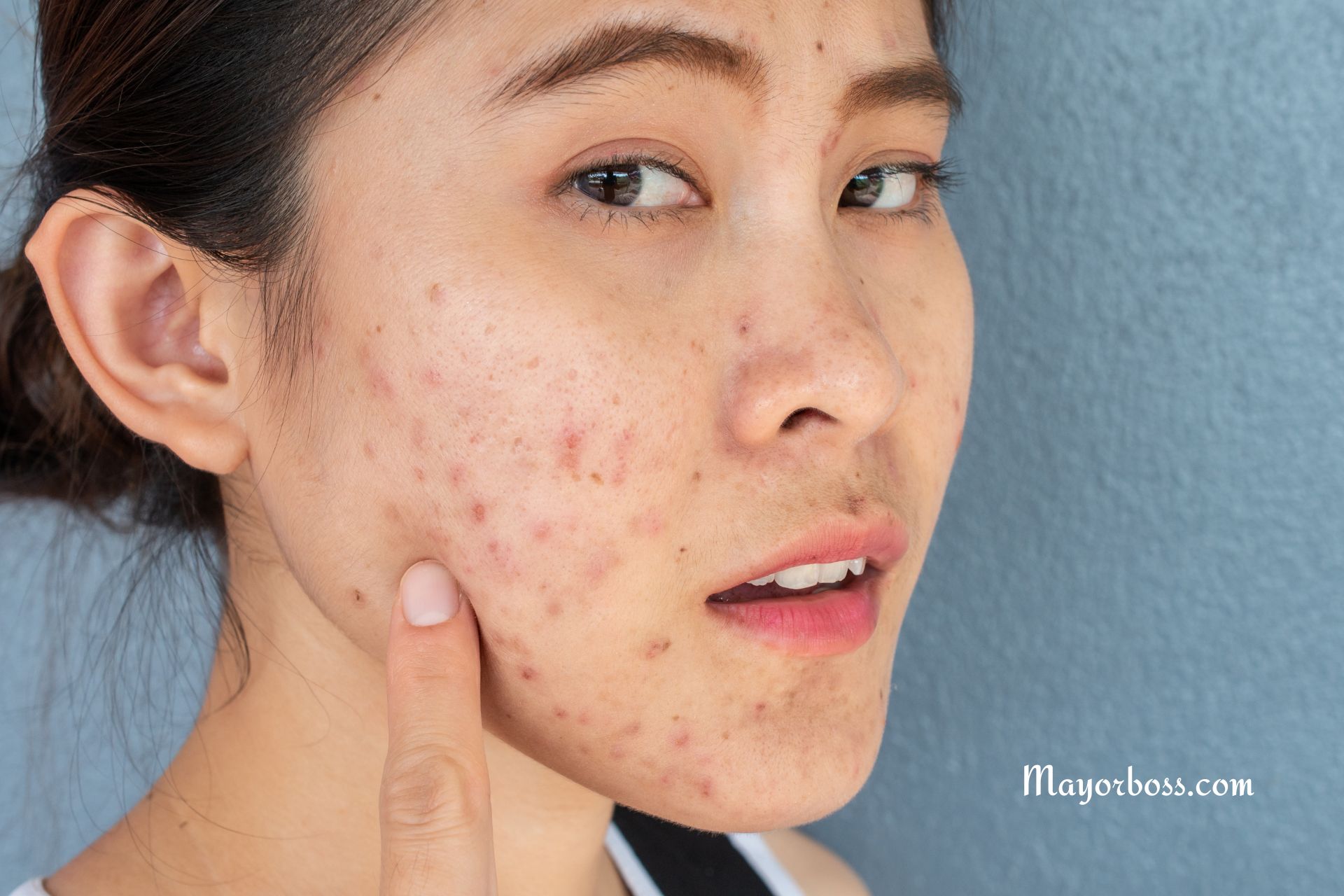How to Remove Spots and Black Dots on Face Skin
Are you bothered by spots and those pesky black dots scattered across your face? Blemishes, dark spots, and blackheads can leave us feeling less confident about our appearance. Don’t despair! In this article, we’ll dive into the causes of these imperfections and provide a comprehensive guide for achieving clearer, smoother skin.

Understanding Different Types of Spots and Black Dots
- Blackheads: These are open comedones formed when excess oil (sebum) and dead skin cells clog a hair follicle (pore). The material oxidizes when exposed to air, which turns it black.
- Whiteheads: Closed comedones appear as small, white bumps. They result from similar clogging as blackheads, but the pore remains closed.
- Hyperpigmentation: This refers to darkened spots on the skin. It can be caused by sun exposure, inflammation (like after acne), hormonal changes, or certain medications.
- Sunspots (Age Spots): These are flat, brown spots that develop in sun-exposed areas, typically in older adults.
- Milia: Small, white cysts filled with keratin (a protein found in skin) that often form around the eyes or cheeks.
How To Treat Dark Spots On The Face
The way you tackle your specific spots and black dots depends on their type and severity. Here’s a helpful breakdown:
1. Daily Skin Care Habits
- Cleansing: Wash your face twice daily with a gentle cleanser formulated for your skin type (oily, dry, combination, etc.). This removes excess oil, dirt, and impurities that can clog pores.
- Exfoliation: Gently exfoliate 2-3 times per week to slough away dead skin cells and prevent build-up. Choose a chemical exfoliant with ingredients like salicylic acid or glycolic acid if you have blackhead-prone skin.
- Moisturizer: Hydrated skin is healthy skin! Use a lightweight, oil-free moisturizer to keep your skin balanced and prevent excessive oil production that can worsen blackheads.
- Sun Protection: Wear a broad-spectrum sunscreen with SPF 30 or higher every day. This prevents sun damage that can cause dark spots and exacerbate existing ones.
2. Over-the-counter (OTC) Treatments
- Spot Treatments: Targeted salicylic acid gels or benzoyl peroxide can help fight breakouts and shrink existing blackheads and pimples.
- Retinoids: OTC retinol (a form of vitamin A) works wonders for both hyperpigmentation and blackheads by speeding up cell turnover and keeping pores unclogged. Start with a lower-strength formula to avoid irritation.
- Brightening Ingredients: Look for serums or lotions containing vitamin C, niacinamide, licorice root, or kojic acid, all of which have skin-brightening properties to fade dark spots.
3. Dermatologist’s Solutions
For persistent issues or stubborn spots, seek guidance from a dermatologist. They offer:
- Prescription-Strength Medications: For severe acne and blackheads, prescription-strength retinoids, topical antibiotics, or, in some cases, oral medications like isotretinoin may be required.
- Professional Extractions: Dermatologists can expertly extract blackheads to clear pores without causing skin damage.
- Chemical Peels: Stronger chemical peels remove the top layer of skin, helping with both blackheads and dark spots.
- Laser Treatment: Light and laser therapies can tackle stubborn acne and blackheads and improve the appearance of dark spots.
4. Home Remedies (Use with Caution)
Home remedies offer limited results and must be used carefully, always with an initial patch test. Some DIY options include:
- Lemon Juice: Its citric acid may have mild bleaching effects, but it can also be irritating.
- Tea Tree Oil: Can help with fighting bacteria but may cause dryness. Always dilute before applying.
- Aloe Vera: Soothes skin and can help reduce inflammation.
Prevention Of Dark Spots On The Face
A good skincare routine will greatly help prevent new spots and black dots from forming:
- Sun Protection: Always use sunscreen with a minimum SPF of 30, even on cloudy days. This is the most crucial preventive measure against sunspots and other skin damage.
- Hydration: Keeps skin plump and functioning optimally. Aim for 8 glasses of water daily.
- Non-Comedogenic Products: Choose skincare and makeup labeled “non-comedogenic” or “oil-free” to avoid clogging pores.
- Don’t Pick!: It may be tempting, but squeezing or picking at spots increases the risk of inflammation, scarring, and the spread of bacteria.
FAQs
1. Will squeezing blackheads help? Squeezing blackheads can actually worsen inflammation and create more potential for scarring. Leave extractions to the professionals or use blackhead removal tools under very hygienic conditions.
2. What home remedies work for spots and black dots? Some people swear by DIY treatments like lemon juice or baking soda, but these can be irritating and don’t guarantee results. Stick to proven strategies and ingredients.
3. How long does it take to see results? Clearing spots and black dots takes time. Most topical treatments need consistent use for several weeks to months before significant improvement is noticeable. Patience is key!
Note: Always patch-test new products on a small area before applying them fully, and consult a dermatologist if you have any concerns or underlying skin conditions.
